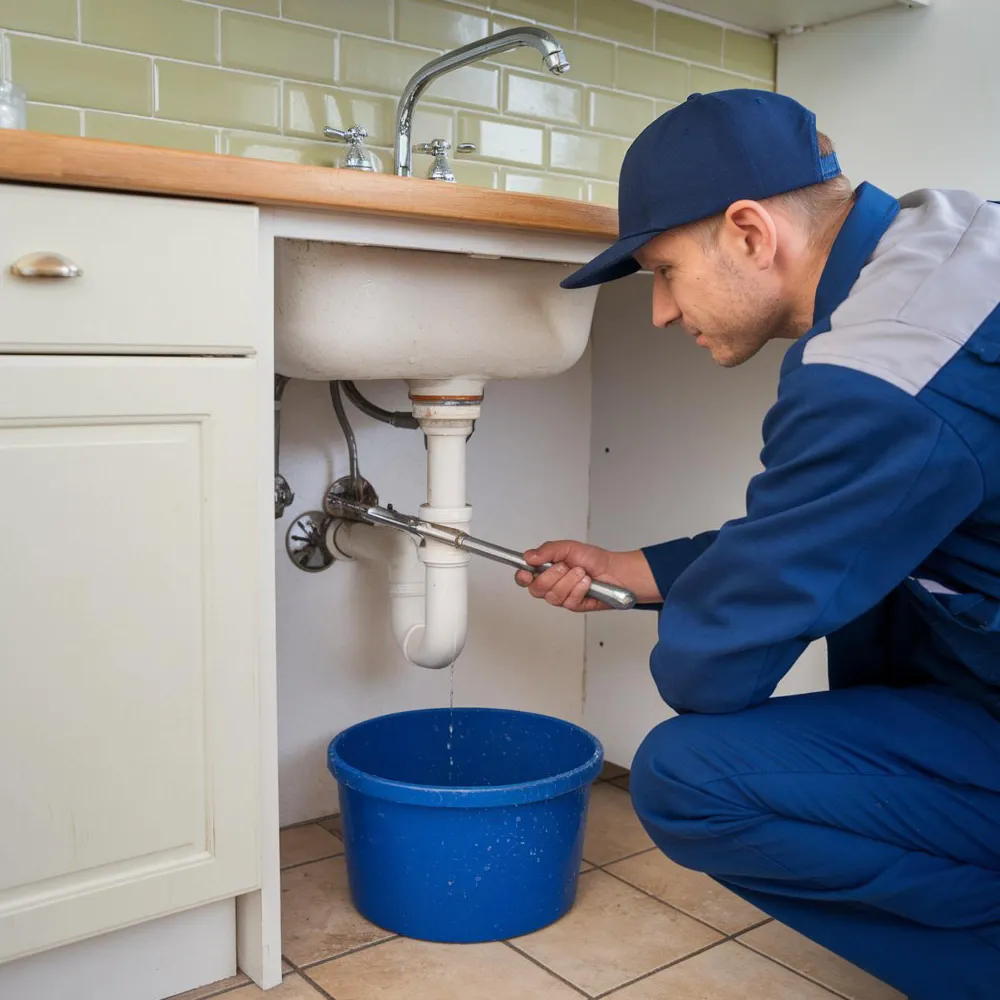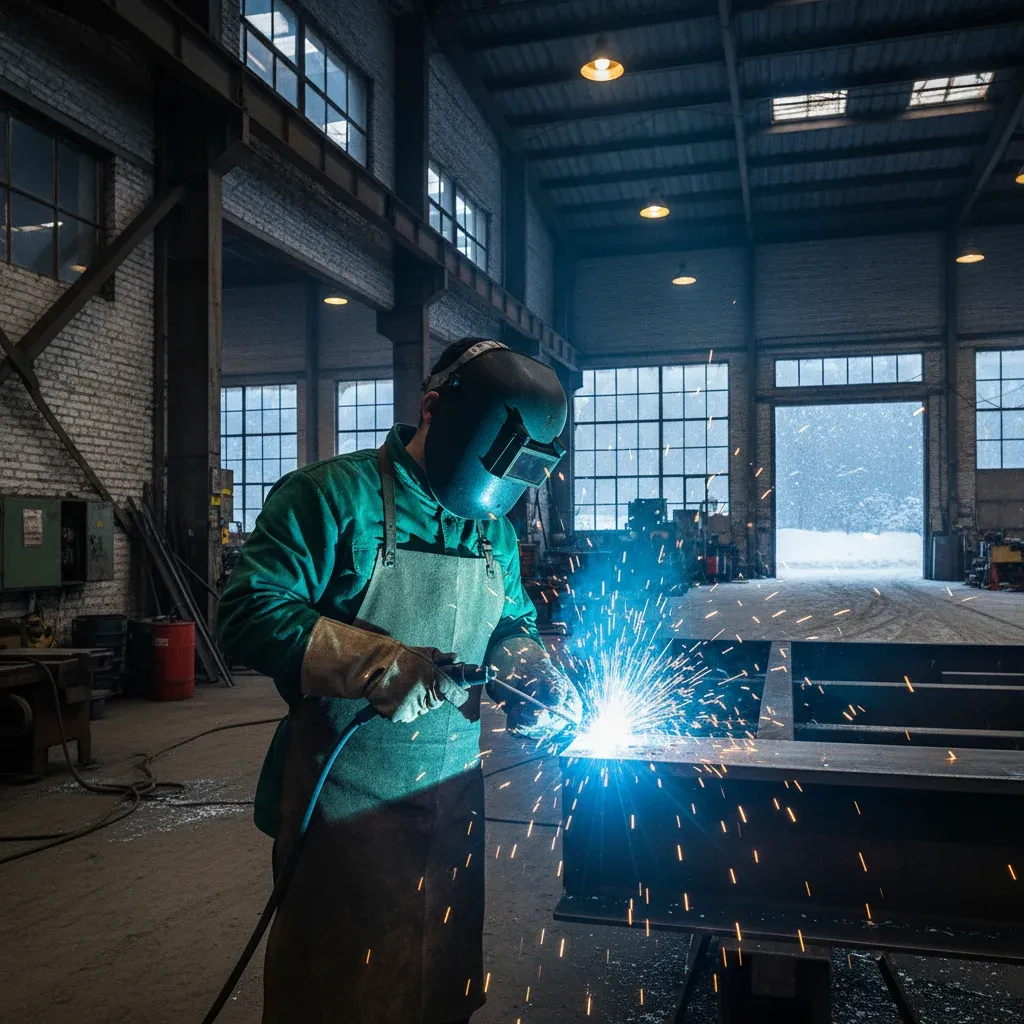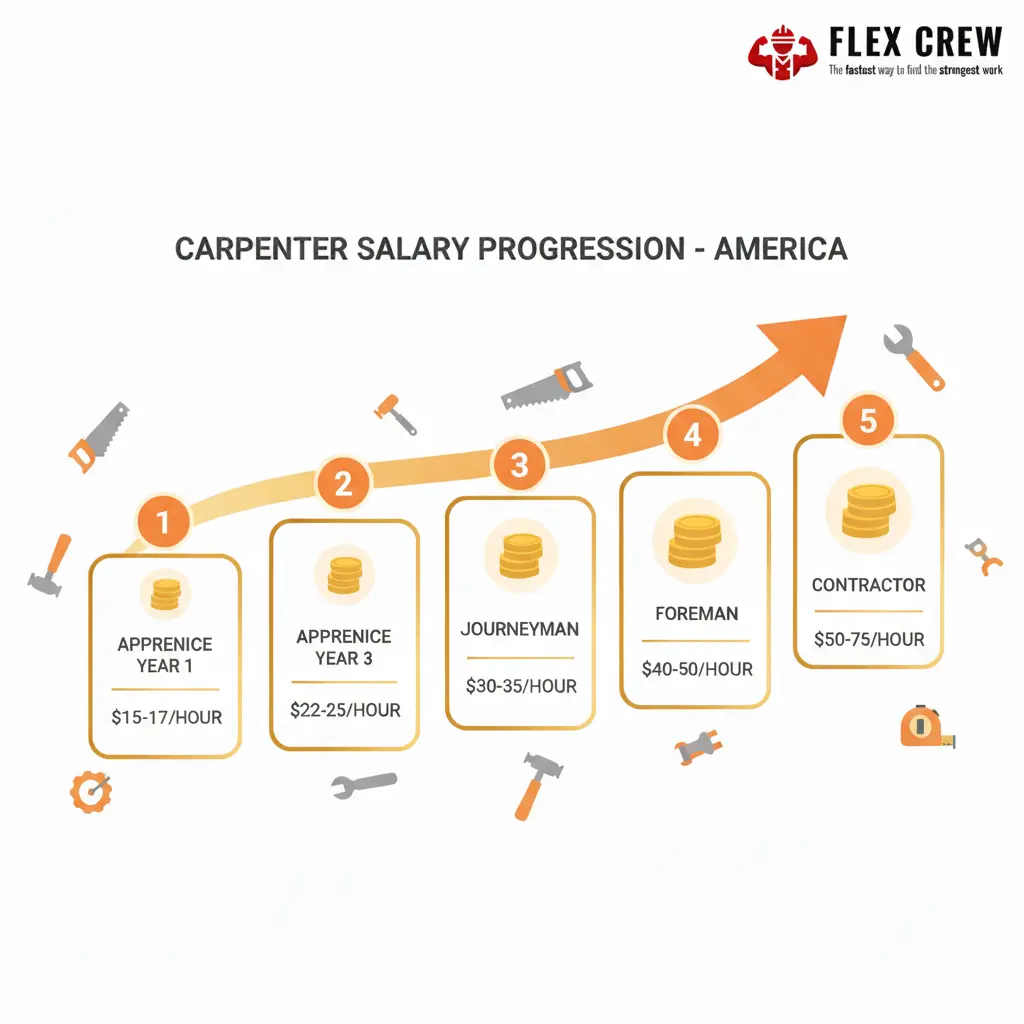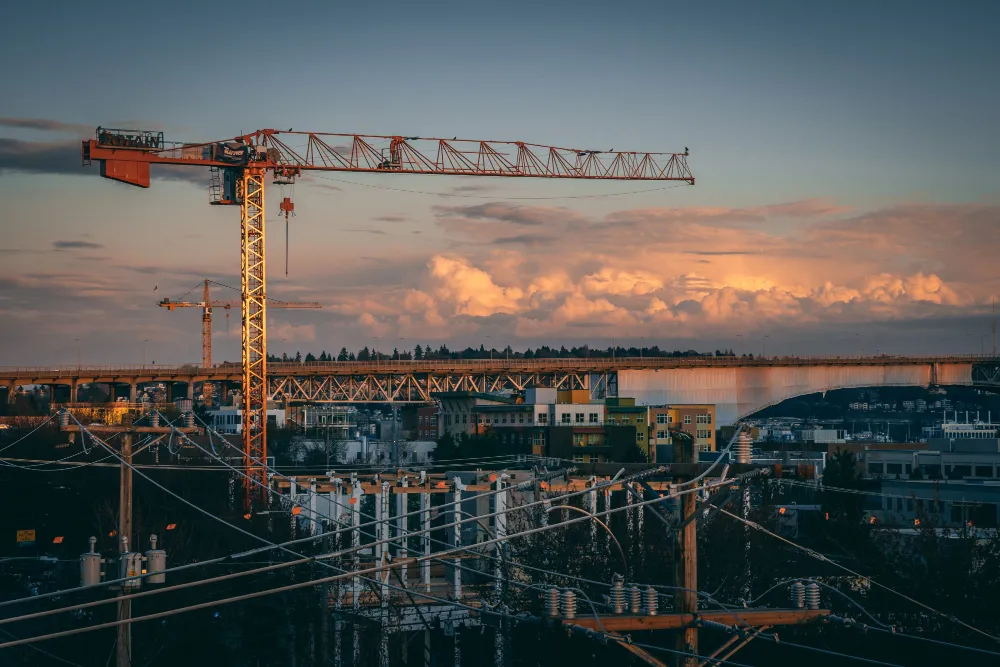Need reliable skilled workers for your plumbing projects? Understanding plumbing basics helps you hire better and manage construction teams more effectively. Here's everything you need to know about plumbing systems and how they work.
What is Plumbing and Why Does It Matter?
Plumbing is the system of pipes, fixtures, valves, and appliances that delivers clean water into buildings and removes wastewater safely. Think of it as your building's circulatory system. Water flows in under pressure, gets used at fixtures like sinks and toilets, and waste exits through drain pipes using gravity.
Every building needs two separate plumbing subsystems. The supply system brings fresh water in under pressure. The drainage system carries wastewater out using gravity and slope. These systems never overlap, which keeps your drinking water safe from contamination.
Whether you're managing a construction crew, hiring plumbers, or overseeing property maintenance, knowing how plumbing works saves you time and money. You'll spot problems faster, communicate better with contractors, and make smarter hiring decisions.

The Two Main Parts of Every Plumbing System
Water Supply System: How Clean Water Reaches Your Fixtures
Your water supply system starts at the main line coming from the street. Water enters under 40 to 80 PSI of pressure. That pressure pushes water upstairs, around corners, and wherever it's needed throughout the building.
Here's how the supply system flows:
- Water enters through the main supply line
- Passes through a meter that tracks usage
- Hits the main shutoff valve (usually near the meter)
- Splits into two paths: cold water and hot water
The cold water line goes directly to fixtures. The hot water line runs to your water heater first. Gas or electric heating elements warm the water to 120-160°F. Then hot water travels through separate pipes to every fixture that needs it.
Most fixtures should have individual shutoff valves. This lets you fix a leaky faucet without shutting down water for the entire building. Smart property managers make sure everyone knows where the main shutoff valve sits in case of emergencies.
Drainage System: Getting Wastewater Out Safely
Drainage systems work completely differently than supply systems. There's no pressure involved. Instead, all drain pipes angle downward at a quarter-inch drop per foot. Gravity pulls wastewater along these sloped pipes toward the main sewer line or septic system.
Key drainage components include:
- Drain pipes: Carry wastewater away from fixtures (ABS, PVC, or cast iron)
- Traps: U-shaped bends that hold water to block sewer gas
- Vents: Pipes that allow air in so water flows smoothly
- Cleanouts: Access points for clearing blockages
Every fixture needs a trap. You see them under sinks as curved pipes. Water stays in that curve, creating a seal that stops nasty sewer gases from backing up into your building. Toilets have built-in traps and don't need extra ones.
Vents stick up through your roof. They let air into the drain system, which equalizes pressure so water flows out properly. Without vents, you'd hear gurgling sounds and traps could get siphoned dry.
Common Plumbing Pipe Materials You'll See on Job Sites
Different pipes serve different purposes. Knowing which is which helps when you're staffing projects or ordering materials.
Material | Common Uses | Key Benefits |
|---|---|---|
Copper | Water supply lines | Durable, heat-resistant, long-lasting |
PEX | Modern water supply | Flexible, quick to install, freeze-resistant |
PVC | Drain and vent pipes | Lightweight, affordable, corrosion-proof |
ABS | Drain and vent pipes | Strong, impact-resistant, cold-weather tough |
Cast Iron | Main drain stacks | Quiet, fire-resistant, extremely durable |
Copper and PEX dominate new construction for supply lines. PVC and ABS handle most drain and vent work. Cast iron still shows up in older buildings and high-rise construction where noise reduction matters.
Municipal vs. Private Plumbing Systems
How City Plumbing Works
Most urban and suburban properties connect to municipal water and sewer systems. Clean water arrives through underground pipes from treatment plants. Pressure from pumps or elevated water towers pushes it through the distribution network.
Wastewater flows the opposite direction. It leaves your building through the main drain, enters the municipal sewer line under the street, and travels to sewage treatment plants. Along the way, lifting stations pump it back up so pipes don't run too deep underground.
Storm drains handle rainwater separately from sewage. This prevents treatment plants from getting overwhelmed during heavy rain. Gutters and downspouts should direct roof water away from foundations, not into sewer lines.
Private Systems for Rural Properties
Properties without city services use wells for water supply and septic systems for waste disposal. A well pump pulls groundwater up from 100 to 500 feet underground. The water passes through filters and pressure tanks before entering the building's plumbing.
Septic tanks collect wastewater and separate solids from liquids. Liquids flow into a drain field where soil naturally filters them. Solids stay in the tank and need pumping every few years. These systems work great but require regular maintenance to stay functional.
Why Proper Venting Matters More Than You Think
Venting is the most misunderstood part of plumbing. When a toilet flushes, water pushes air downstream and creates negative pressure behind it. Vents equalize that pressure change by pulling air in from the roof.
Signs of venting problems:
- Gurgling sounds from drains
- Slow drainage despite clear pipes
- Sewer smells inside the building
- Toilets that don't flush properly
Vents also prevent trap siphoning. If negative pressure gets too strong, it can suck water out of traps. That breaks the seal and lets sewer gas into living spaces. Building codes require specific vent sizing and placement for this exact reason.
Bird nests and debris can clog roof vents. Smart maintenance includes checking vents annually, especially after winter or storms.
Essential Plumbing Skills Construction Professionals Need
Whether you're hiring plumbers or training new crew members, these skills separate good workers from great ones.
Technical skills that matter:
- Reading blueprints and understanding plumbing symbols
- Measuring, cutting, and joining pipes accurately
- Installing fixtures to code specifications
- Testing systems for leaks and proper drainage
- Troubleshooting common problems quickly
Soft skills that boost productivity:
- Clear communication with property owners and other trades
- Problem-solving under pressure
- Attention to safety protocols
- Time management on multi-phase projects
The best plumbers combine technical knowledge with practical experience. They understand local building codes, work safely, and deliver quality installations that pass inspection the first time.
Looking to build a stronger plumbing crew? FlexCrew USA's AI Resume Builder helps you find qualified plumbers fast. Screen candidates based on certifications, experience level, and specific skills your projects need.
How Plumbing Codes Protect Your Projects
Building codes exist for good reason. They ensure plumbing systems work safely and reliably for decades. Codes cover everything from pipe sizing to fixture placement to venting requirements.
Key code areas that affect construction:
- Minimum pipe diameters for different fixtures
- Required slope for drain lines (typically 1/4 inch per foot)
- Vent sizing and placement rules
- Backflow prevention requirements
- Material standards for different applications
Inspectors check plumbing at rough-in stage before walls close up. They verify pipe placement, proper support, correct materials, and code compliance. Failed inspections mean delays and expensive fixes.
Hiring plumbers who know local codes saves headaches. They install it right the first time, pass inspections quickly, and keep your project on schedule.
Common Plumbing Problems and What Causes Them
Understanding typical plumbing issues helps you staff projects appropriately and budget for maintenance.
Frequent problems include:
- Clogged drains: Hair, grease, and debris build up in pipes
- Leaky fixtures: Worn washers, corroded parts, or loose connections
- Running toilets: Faulty flappers or fill valves waste water
- Low water pressure: Mineral buildup or undersized pipes
- Frozen pipes: Insufficient insulation in cold climates
Prevention beats repair every time. Regular maintenance catches small issues before they become expensive emergencies. Smart property managers schedule annual plumbing inspections to spot corrosion, test water pressure, and clear drains proactively.
Plumbing Career Pathways and Training Options
The construction industry needs skilled plumbers now more than ever. Baby boomers are retiring faster than new workers enter the trade. This creates excellent opportunities for people looking to start or advance their plumbing careers.
Typical plumbing career progression:
- Helper/Laborer (0-1 year experience)
- Apprentice (1-4 years, combination of work and classroom)
- Journeyman (passed licensing exam, works independently)
- Master Plumber (advanced certification, can pull permits)
Apprenticeships combine on-the-job training with classroom instruction. Trainees learn pipe fitting, code compliance, blueprint reading, and system installation. They work alongside experienced plumbers who teach practical skills and problem-solving techniques.
Vocational schools and community colleges offer plumbing programs that fast-track entry into apprenticeships. These programs cover plumbing theory, mathematics, safety practices, and hands-on skills with real materials and tools.
Ready to advance your plumbing career? FlexCrew USA's AI Resume Builder helps you showcase your certifications, project experience, and technical skills. Create a professional resume that gets noticed by top construction companies hiring plumbers right now.
Why Plumbing Quality Affects Property Value
Good plumbing is invisible. Tenants and buyers never think about pipes when everything works smoothly. But poor plumbing becomes obvious fast through leaks, clogs, low pressure, and water damage.
How plumbing impacts property value:
- Updated fixtures and efficient systems increase appeal
- Documented maintenance history builds buyer confidence
- Code-compliant installations prevent future headaches
- Quality materials reduce long-term repair costs
- Proper installation extends system lifespan to 50+ years
Property investors know that plumbing upgrades deliver strong returns. Replacing old galvanized pipes, updating fixtures, or adding bathrooms increases both rental income and resale value. The key is hiring qualified plumbers who do quality work.
Managing Plumbing Labor on Construction Projects
Plumbing typically happens in two phases during construction. Rough-in work installs pipes in walls and under floors before drywall goes up. Finish work installs fixtures after walls, flooring, and painting are complete.
Effective plumbing project management includes:
- Scheduling rough-in to coordinate with framing and electrical
- Ordering materials with enough lead time
- Staffing appropriately for project size and complexity
- Building in time for inspections before closing walls
- Planning finish work after other trades complete
Communication between trades prevents conflicts and delays. Plumbers need to know where HVAC ducts, electrical conduit, and structural supports will run. Good project managers coordinate these details upfront through clear plans and regular job site meetings.
Need experienced plumbers for your next project? FlexCrew USA connects construction companies with qualified plumbing professionals. Find licensed journeymen, apprentices, and specialized technicians ready to work.
Water Conservation and Modern Plumbing
Today's plumbing systems balance functionality with water efficiency. Low-flow fixtures reduce water consumption without sacrificing performance. This cuts utility costs and helps properties meet green building standards.
Water-saving plumbing features:
- Low-flow toilets (1.6 gallons per flush vs. old 3.5-5 gallon models)
- Efficient faucet aerators (1.5 GPM vs. older 2.5+ GPM)
- High-efficiency showerheads (2.0 GPM or less)
- Tankless water heaters (heat water on demand)
- Greywater systems (reuse sink/shower water for irrigation)
Many jurisdictions now require water-efficient fixtures in new construction and major renovations. Property owners who upgrade voluntarily often qualify for rebates from water utilities.
The Future of Plumbing Technology
Plumbing technology keeps advancing. Smart leak detectors alert property owners to problems before major damage occurs. Touchless faucets reduce germ spread. PEX piping systems install faster than traditional copper.
Emerging plumbing technologies:
- Water monitoring systems that track usage in real-time
- Smart shut-off valves that stop leaks automatically
- Point-of-use water filtration for better quality
- Solar water heating for energy efficiency
- Recirculation systems that deliver hot water instantly
Plumbers who stay current with new technologies become more valuable. They can recommend modern solutions that save clients money and solve problems traditional methods can't address.
Finding and Hiring Qualified Plumbing Professionals
The shortage of skilled plumbers makes hiring challenging. Good plumbers stay busy, and competition for their services runs high. Construction companies that find and retain quality plumbers gain a competitive advantage.
What to look for when hiring plumbers:
- Valid license and insurance coverage
- Relevant experience with similar project types
- Strong safety record and OSHA training
- Good communication and professional attitude
- References from previous employers or clients
Many contractors struggle to screen candidates efficiently. Reviewing resumes, checking licenses, and verifying experience takes time away from managing projects.
FlexCrew USA's AI Resume Builder streamlines the hiring process. Our platform helps plumbers create professional resumes that highlight certifications, project experience, and specialized skills. Construction companies can quickly identify candidates who match their specific needs, reducing time-to-hire and improving team quality.
Key Takeaways About Plumbing Systems
Understanding plumbing helps construction professionals manage projects better, property owners maintain buildings smarter, and workers advance their careers faster. The principles haven't changed much in decades. Clean water comes in under pressure. Wastewater flows out by gravity. Proper venting makes everything work smoothly.
Quality plumbing requires skilled workers who understand codes, work safely, and deliver installations that last. The construction industry needs more qualified plumbers right now. This creates opportunities for people entering the trade and challenges for companies trying to staff projects.
Whether you're hiring plumbers, managing construction, or building your career, the fundamentals matter. Get the basics right and everything else becomes easier.
Frequently Asked Questions About Plumbing
What is plumbing in simple terms?
Plumbing is the system that brings clean water into buildings and removes dirty water safely. It includes all the pipes, fixtures, valves, and drains that make water flow where you need it.
What are the two main parts of a plumbing system?
Every plumbing system has a water supply side that brings fresh water in under pressure, and a drainage side that carries wastewater out using gravity. These two systems never connect directly to keep drinking water safe.
How much does a plumber make in the United States?
Plumbers earn good money. Apprentices start around $35,000-$45,000 annually. Licensed journeymen typically make $50,000-$75,000. Master plumbers and those running their own businesses often earn $80,000-$100,000+ per year, depending on location and experience.
What's the difference between a journeyman and master plumber?
A journeyman plumber has completed an apprenticeship and passed the licensing exam to work independently. A master plumber has additional years of experience, passed a more advanced exam, and can pull permits, supervise other plumbers, and run a plumbing business.
Do plumbers need to know building codes?
Yes, absolutely. Building codes tell plumbers what materials to use, how to size pipes, where to place vents, and dozens of other requirements. Plumbers who don't follow code create unsafe conditions and fail inspections.
How long does it take to become a licensed plumber?
Most people become licensed journeyman plumbers in 4-5 years. This typically includes 8,000-10,000 hours of on-the-job training through an apprenticeship, plus classroom instruction. Becoming a master plumber takes an additional 2-4 years of experience.
What causes low water pressure in buildings?
Common causes include clogged aerators, partially closed shutoff valves, corroded pipes, undersized supply lines, leaks in the system, or problems with the municipal water supply. A qualified plumber can diagnose the specific issue.
Why do drains gurgle?
Gurgling happens when drain vents are blocked or missing. Without proper venting, air can't enter the drain system, so water flow creates suction that pulls air through traps. This makes the gurgling sound and can siphon trap water away.
How often should plumbing systems be inspected?
Property owners should have plumbing professionally inspected every 2-3 years. Older buildings or those with past problems may need annual inspections. Regular checks catch small issues before they become expensive emergencies.
What's the best way to find qualified plumbers for construction projects?
Use specialized platforms like FlexCrew USA that connect construction companies with verified, licensed plumbing professionals. Screen candidates based on certifications, experience level, and specific project needs to build stronger crews faster.
Need skilled plumbers for your construction projects? FlexCrew USA helps construction companies find qualified plumbing professionals quickly. Our AI-powered platform matches you with licensed plumbers who have the right experience for your specific needs. Build better crews, finish projects on time, and grow your construction business with FlexCrew USA.



